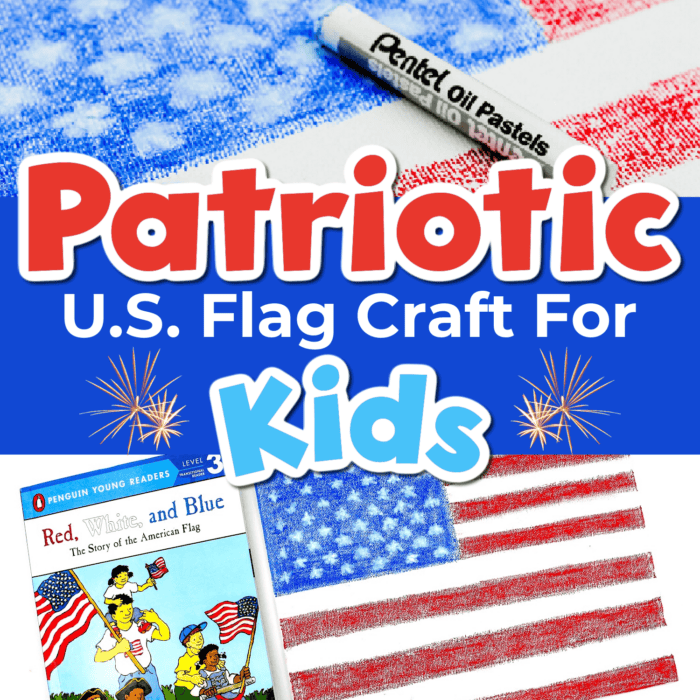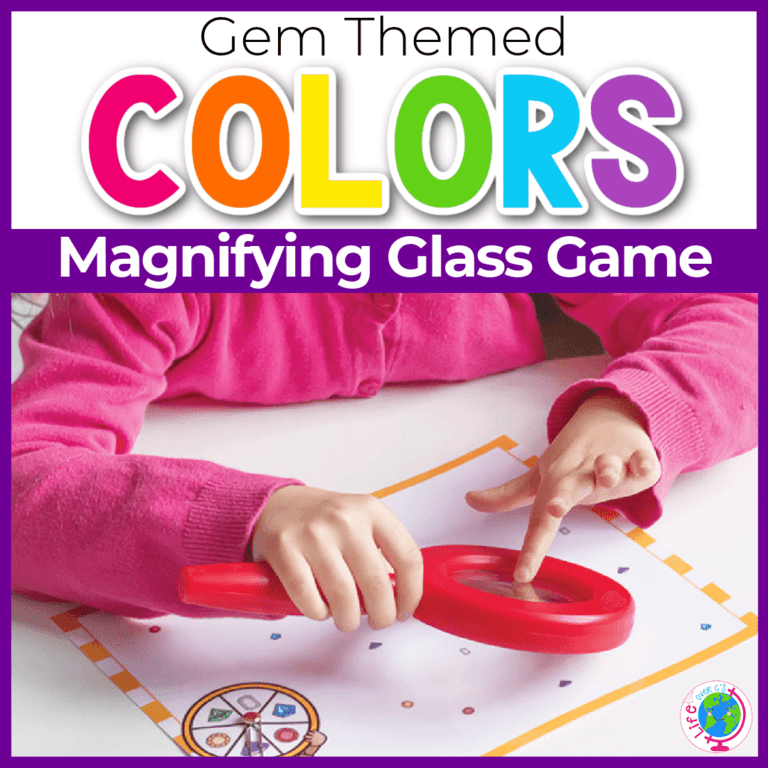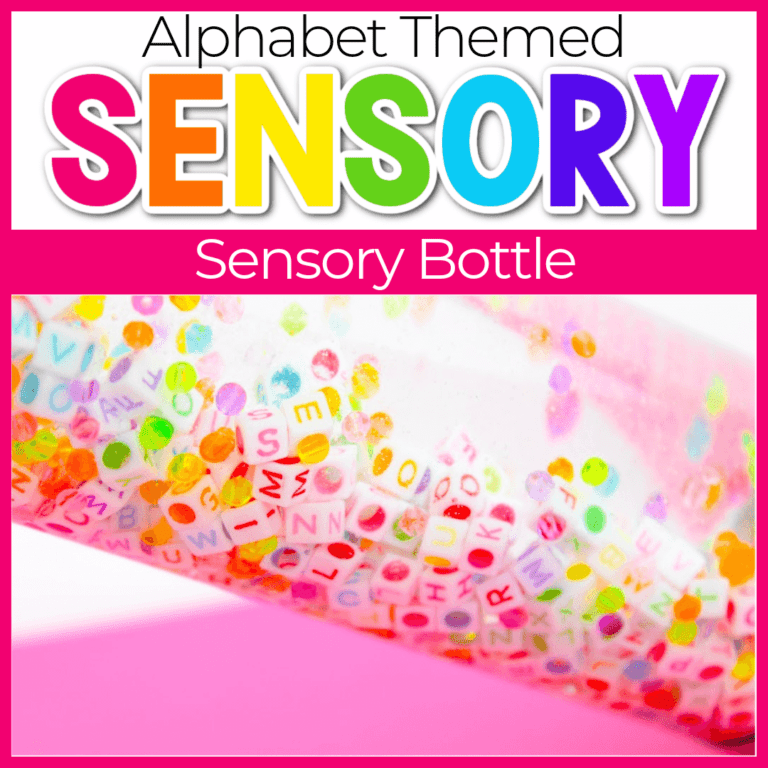Fun 4th of July Bouncy Ball Process Art for Kids
Let’s be honest, art with preschoolers can be a hot mess! Whether you’re cutting, gluing, watercolor painting, glittering, or building with popsicle sticks, the chances are high that supplies and materials will land EVERYWHERE. LOL! That’s what makes process art projects a beautiful thing! It’s about the PROCESS, not the RESULTS. Kids inherently know and believe this, now it’s time for parents, caregivers, and teachers to get on board! You have to try this 4th of July Bouncy Ball Process Art!

Recommended Grade Level:
4th of July Bouncy Ball Process Art
Have you heard of process art? It’s the idea that kids learn more from the process of creating something with materials, rather then always focusing on the outcome of a project. There’s a lot to be said for not always praising projects that look a certain way, or asking kids to follow specific step-by-step instructions to create cookie cutter art projects that all turn out the same. If you’re into things like process art and hands-on learning activities, try our Farm Animal Theme Snacks, where you create something adorable then gobble it up!
This 4th of July process art activity helps develop important developmental skills, like fine motor dexterity, creativity and problem-solving. With process art, there is no “right” or “wrong” outcome. Have some fun with this patriotic craft! It requires paint, bouncy balls, and metal trays. And, guess what?! This easy craft isn’t even actually that messy!
Materials You Will Need for the 4th of July Bouncy Ball Painting:
- Cardstock Paper
- Red, White, and Blue Washable Paint
- Glitter or Confetti
- Bouncy Balls
- Cake Pan

Step-by-Step Instructions for Bouncy Ball Process Art
Step One:
Place the sheet of paper inside the cake pan.
Pour about a quarter size amount of paint onto the paper. Add as many colors and paint blobs as you would like!
Tip: If you want to achieve an art piece to save and display, use less paint.

Step Two:
Add the glitter/confetti and bouncy balls.

Step Three:
Carefully lift the cake pan and tilt the pan around. Choose to tilt the pan sideways, forward and backwards, or in a circular motion to get the desired paint effect.
The bouncy ball(s) will move around inside the cake pan, creating tracks of paint to make a cool design!

Step Four:
Add additional paint or glitter/confetti if necessary to create more patterns.
Tip: Dry the papers to display as abstract art OR discard the papers after the fun is complete.

What Next?
Whether you’d like to display your abstract creations, or toss everything away, you can count the project a success! Sometimes it’s a relief for kids to know that the final product was not the goal, but rather the fun of rolling the balls around and seeing what kinds of designs and patterns were formed.
Ways to Adapt Bouncy Ball Art
Since this project is so much about the process and not the final product, I think that opens up a wide array of modifications! Get creative with the supplies you already have on hand, or modify for individual learners. Here are a few ideas to get you started:
- Use marbles instead! If you don’t already have bouncy balls on hand, save money by using marbles, toy cars, golf balls, or something else that rolls.
- Change the paint colors as desired. Experiment with glow-in-the-dark paint, or omit the glitter and instead use glitter paint.
- Assist those that need it by helping them hold and tilt the pan. Alternatively, show kids how to leave the pan on the table, but lift a corner to get the ball rolling.
- Incorporate letters or numbers by using paper with a specific letter/number/name on it to paint over.
Looking for more bouncy ball art activities? Check these out:
- Coloring Mixing Bouncy Ball Art
- Rainbow Bouncy Ball Art
- St. Patrick’s Day Bouncy Ball Art
- Space Galaxy Bouncy Ball Art
Build Background Knowledge on the Patriotic Holiday
The bouncy ball art project is the perfect opportunity to delve a little deeper into the holiday with young learners.
Begin with a brief history of the holiday. Why do we celebrate in the first place? Who is Uncle Sam?
Take a closer look at the American flag. How many stars and stripes? Why? Our flag is red, white, and blue. What does each color represent?
Once it’s clear that we don’t just honor the day because we like picnics and fireworks, it’s time to bring it to life with the 4th of July process art project.
Exploring with Process Art
What I love even more about this activity is that it’s so easy to meld it into other subjects, holidays, or themes! All you need to do is change the colors or the type of confetti and you can repeat the same activity over and over, or until your students lose interest. But that’s not happening anytime soon!
And the other thing I love about process art is that the mess is contained within the walls of the cake pan. You can stock up on thrift store finds to wash and re-use, or go the disposable route and buy aluminum pans that actually get a lot of miles out of them when used for painting.
More Ways to Explore the 4th of July
Paper plates go a loooong way on patriotic holidays (Memorial Day too)! There are a number of fun, easy flag projects to consider:
- Cut plates in half, then create stars on the top by painting over star templates with blue paint. Remove the template, and voila, you have stars! Attach red and white confetti to the bottom edge.
- Create a paper plate flag “wreath” by cutting out the circular center and attaching red, white, and blue stars around the perimeter.
- Develop dexterity by punching holes along the edges of a paper plate and weaving red and white yarn from side to side to create flag, then attach the blue-backed stars on top of the yarn weave.
- Paint a flag on the plate with red stripes and a blue rectangle in the upper quadrant. Add foil stars, confetti, or other star stickers.
- Create a 4th of July Sensory Bottle with simple beads and buttons.
Or, leave the plates for the hot dogs, and consider these learning opportunities:
- Make simple party favors
- Sing traditional patriotic songs
- Make fireworks in a jar with star confetti, water, food coloring, and oil
- Play “capture the flag”
- Read stories about Independence Day
Frequently Asked Questions
These are frequently asked questions about the bouncy ball process art project.
What is the learning goal of process art activities like this one?
The main goal is to enjoy the creative process of making art. Children experiment with tilting and turning the pan to see how the bouncy balls create different patterns and designs with the paint. It’s about exploring movement, color, and creativity rather than focusing on the final product.
What other learning opportunities are within the bouncy ball art project?
Discuss the process and outcomes with the children. Ask questions like “What happened when you tilted the pan this way?” or “How did the colors mix together?” You can also talk about the physics of how the balls move through the paint or explore the concept of abstract art. Displaying the finished artwork and discussing each child’s unique design can further enhance the learning experience.
How can I incorporate a lesson about the significance of the 4th of July?
You can incorporate learning by discussing the colors used and their significance to the 4th of July, such as why red, white, and blue are important. You can extend that discussion into learning about the American flag.
Can I adapt the materials required?
You can vary the activity by using different sizes and types of balls, like marbles or larger bouncy balls, to see how they create different patterns. You can also experiment with different types of paper, like textured or colored paper, or add glitter to the paint for extra sparkle. Additionally, try using different color combinations for other holidays or themes throughout the year.
Comment below to tell us how your process art activity went! Remember, it’s about the journey, not the destination when it comes to process art.
Looking For More 4th of July Fun?
More 4th of July Art You’ll Love:
- 4th of July Toilet Paper Roll Fireworks Art
- Patriotic DIY Calm Down Bottle
- 4th of July American Flag Craft For Kids
More Process Art Ideas:
- Space Themed Bouncy Ball Art
- St. Patrick’s Day Bouncy Ball Art
- Color Mixing Bouncy Ball Art
- Rainbow Bouncy Ball Process Art
- Glitter Printing Process Art
Search All Activities
Looking for more? Find exactly what you need here:















![4th of July Fireworks Toilet Paper Roll Art for Preschoolers 2 red and blue fireworks process art activity with toilet paper rolls text overlay says [fireworks toilet paper roll painting]](https://lifeovercs.com/wp-content/uploads/2024/06/Craft-Toilet-Paper-Roll-fireworks-sq-2-700x700.png)
![4th of July Play Dough Activity Tray for Preschoolers 3 overhead view of play dough, buttons, beads, and cookie cutters in a tray for a 4th of july activity. text says [4th of july play dough sensory for kids]](https://lifeovercs.com/wp-content/uploads/2024/05/4th-of-July-Play-Dough-Invitation-for-preschoolers-6-700x700.png)







